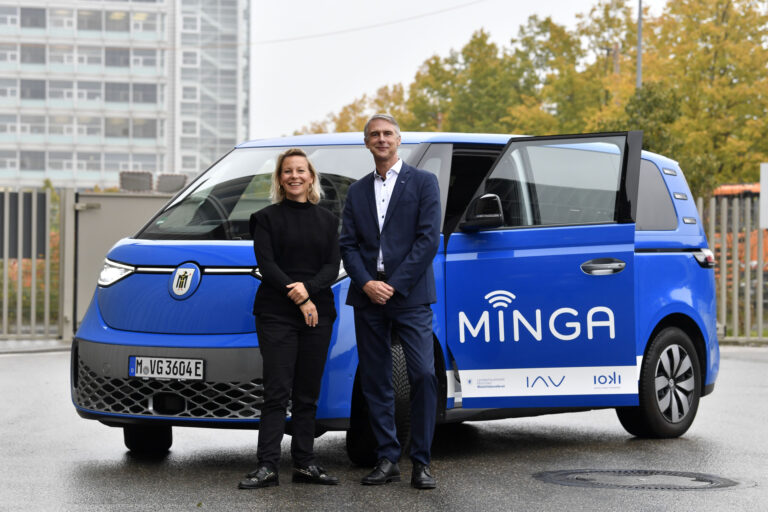As part of the MINGA research and development project, Munich-based Stadtwerke München (SWM) and its mobility subsidiary Münchner Verkehrsgesellschaft (MVG) have partnered with Ingenieurgesellschaft Auto und Verkehr (IAV) to test three ID.Buzz vehicles in on-demand operation, thereby laying the foundation for more flexible, efficient and sustainable public transportation. IAV will equip them with an advanced system that enables Level 4 autonomous driving.
The first test phase will focus on the technical and operational aspects of driving. Riding along will be possible during the second phase of testing. Sinaida Cordes, deputy managing director of mobility at SWM and MVG, said, “Autonomous vehicles can play a central role in overcoming the challenges facing public transportation. We see the opportunities that autonomous vehicles can offer, particularly in view of the increasing shortage of skilled workers and the need for more flexible public transportation. Together with IAV, we want to take advantage of these opportunities, test smaller vehicle sizes for their practical suitability, and further develop them in line with our needs in order to offer the best possible mobility services.”
The MINGA project
The MINGA (Munich’s automated local transport with ride pooling, solo buses and bus platoons) research project uses Munich as an example to show what local transportation could look like in the future. Sixteen partners from administration, research, business and industry are working together under the consortium leadership of the Mobility Department of the City of Munich to integrate innovative mobility solutions into everyday life. By 2027, autonomous shuttles, an autonomous solo bus and a bus platoon are to be tested under real-life conditions in various test areas. The €13m project is being funded by the German Federal Ministry of Transport.
One focus of the project is on a ride-pooling system that sets standards through the integration of autonomous vehicles. Initially, three automated vehicles with Level 4 functionality will be deployed in the Munich district of Gern/Nymphenburg. With its complex traffic situations, the neighborhood offers ideal conditions for test operations. In the future, the shuttles will be driverless, monitored centrally by the MVG control center and integrated into the regular public transportation system – an important step toward autonomous mobility suitable for everyday use.
“With our expertise in the field of autonomous system solutions, we are making a decisive contribution to the mobility of the future. In Munich, a hotspot of German industry, IAV is actively promoting a roadmap that will realize fully driverless driving in the near future. MINGA is an important milestone on the way to a scalable solution in the field of autonomous public transportation – and IAV is the partner of choice for its implementation,” added Carsten Rinka, CSO at IAV.
Tailor-made technology
To gain initial experience in the operation of autonomous vehicles, MVG is relying on a close research and development partnership with IAV. Based on a VW ID. Buzz, IAV is developing a high-tech shuttle with sensor technology. With the self-driving software, the vehicle can perceive its surroundings in detail and navigate safely. The combination of precise GPS data, trip data from the ride-pooling software and the recognition of real traffic conditions forms the basis for the test operation.
A technology partner for on-demand transportation, ioki GmbH is supplying the ride-pooling and routing software that will enable smart control of the autonomous fleet.
Test operation under real conditions
Starting in 2026, three autonomous shuttles will be tested in public road traffic. The test drives will initially be carried out without passengers, as the focus will be on commissioning and optimizing the autonomous driving system. Once the operation is safe and running smoothly, citizens will have the opportunity to ride in the vehicles. Safety personnel will be on board at all times to intervene and act as contact persons for passengers.
A prerequisite for operation is a test permit in accordance with the Ordinance on the Approval and Operation of Motor Vehicles with Autonomous Driving Functions (AFGBV). This permit allows the technology to be tested under real-world conditions, ensuring the highest safety standards.
In related news, Tobii, HTEC and D3 co-develop sensor fusion-based interior sensing solution


